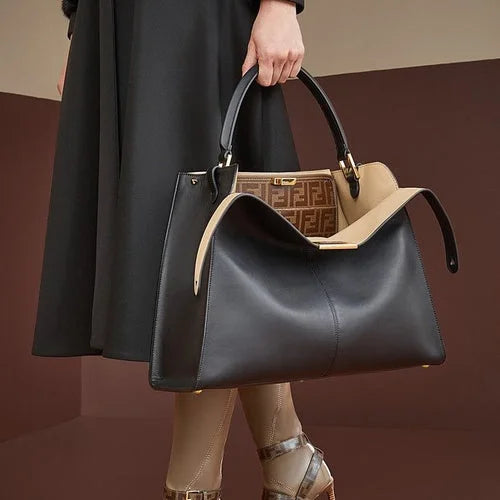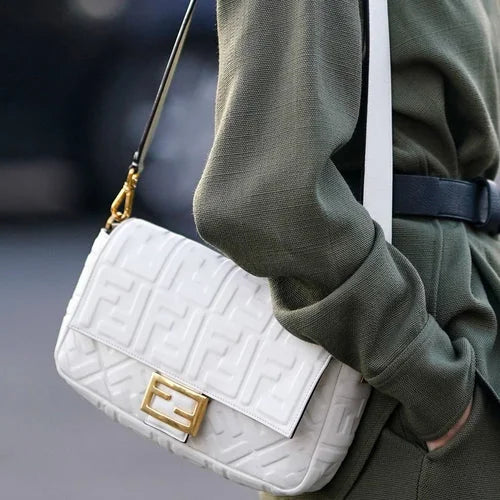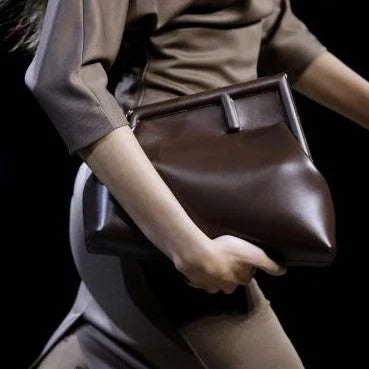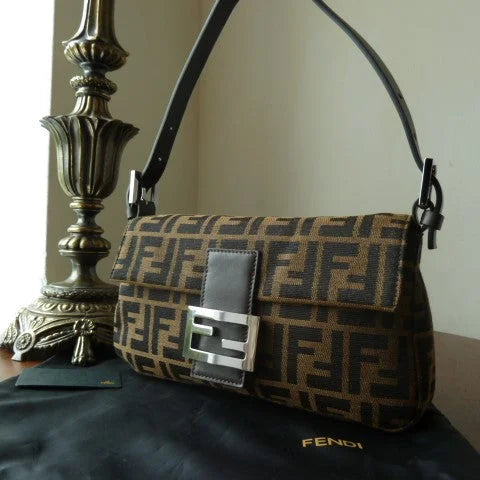How to Tell if a Fendi Bag is Real?

Fendi is a high-end brand famous for its prestigious leather goods. Fendi was founded in Rome and became a luxury brand we know today.
The iconic Baguette bag launched in 1997 gained immense popularity, remaining among today's most popular designs. Fendi bags feature exclusive craftsmanship, quality, and high-end design, which justifies the high price tag. Therefore, the iconic bags are a target for counterfeiters looking for ways to make quick money.
How to tell if a Fendi bag is real? We share the proven methods with step-by-step instructions so you can confirm authenticity.
Table of Contents
[ open ]Found out the truth about your Fendi
The Overall Look

How to know if a Fendi bag is real by analyzing the overall look? The original bag should feel sturdy and heavy, while fakes feel flimsy.
Next, we move to inspecting the signature Fendi pattern. When comparing the real and fake bags, we notice an apparent difference in the embossing.
The Fendi pattern on the genuine bag has a gradient effect, which results in a streamlined look. At the same time, the fake bag has a design with very sharp lines and doesn't flow naturally.
The positioning of the "F" letters consisting of the logo is another telltale sign. We can see how the original pattern features a gap between the two letters.
We can't say the same for the fake pattern. The "F" letters are placed too close, changing the pattern's appearance.
If you don't know how to tell if a Fendi bag is real, take a look at the stitching. This step provides valuable insights for authenticating your bag.
The original Fendi bag comes with neat and dense stitching, reflecting the quality and attention to detail typical of this brand. While the counterfeiters can try to copy the aesthetics, they don't have the sophisticated technology to recreate the same quality.
Therefore, the fake bag has uneven stitching and poor quality. Notice how the stitches vary in size and have a gap between them.
While this is an aesthetic issue, it will also impact the product's longevity. Poor stitching will result in the bag falling apart after frequent wearing.
Logo and Branding
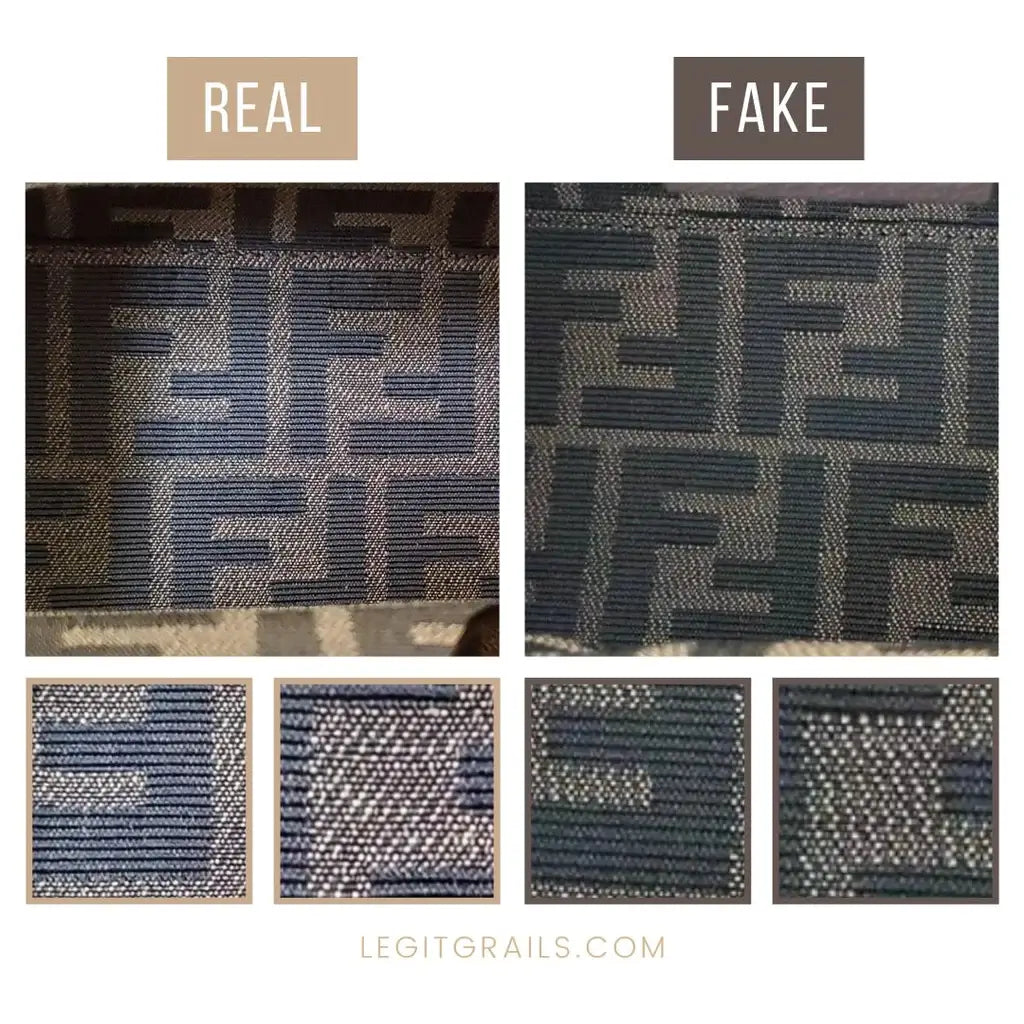
Assessing the logo is crucial for authenticating a designer's bag. This is usually where counterfeiters fail and create logos that don't match the original.
Firstly, there is a prominent difference in the color and texture. The original Fendi logo has a lighter color than the fake one.
Another significant difference is the precision. The original Fendi logo has clean lines and precise edges, while the fake one has irregular letters.
In the original double "F" logo, the letters have a gap between them. This is an important detail since it defines the blank space between the letters, a signature for this brand.
We can notice how the letters are placed closely in the fake bag. With this, the logo does not follow the original brand aesthetic. The blank space between the letters does not match the authentic logo.
Stitching Quality
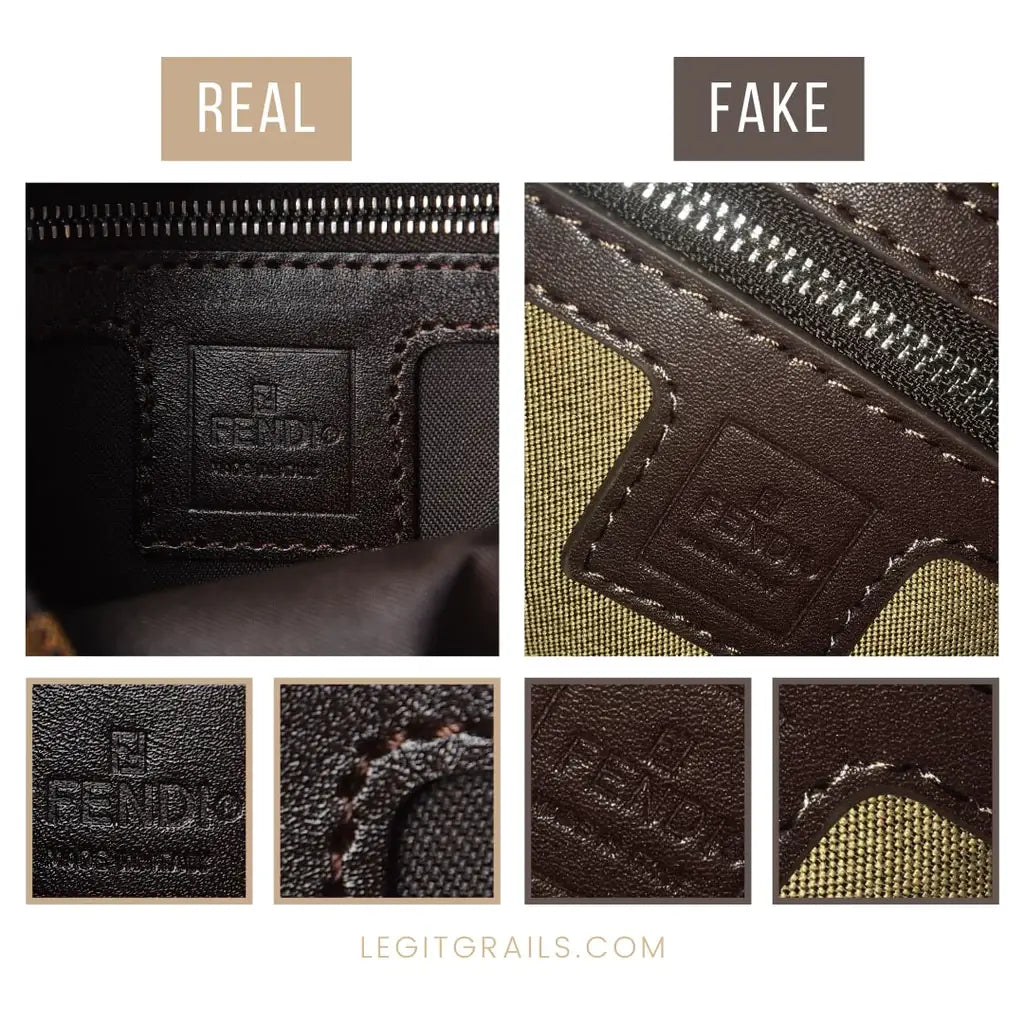
Fendi ensures a high level of craftsmanship and substantial quality control. Therefore, you won't see any stitching flaws.
The original Fendi bags have consistent and precise stitching. In contrast, fake bags have irregular spacing and loose threads.
The stitching color should remain consistent with the material for a streamlined look. Any inconsistencies in the thread color indicate a fake Fendi bag.
The Fendi logo on the bag's interior is another point of interest. In the original bag, it is perfectly centered and embossed with high precision.
Also, notice how the stitching perfectly follows the edges and contours of the authentic bag. Whereas the stitching is not neatly aligned in the fake bag.
The letters are visibly thicker on the authentic bag. On the other hand, they are thin and poorly embossed into the material on the counter product.
Hardware and Details

A designer's bag hardware can reveal a lot about the manufacturing practices. Big brands like Fendi use quality metals to ensure product longevity, which isn't the case with counterfeit goods.
For this authentication method, we inspect the bag's clasp. In the original bag, the clutch is attached with two metal bolts crafted with precision.
On the other hand, we can notice the poor quality of the fake bag. The flimsy bolts have different textures, indicating that poor-quality materials were used.
The branded logo engraved on the metal plate is another important indicator. The original comes with high-precision engraving, resulting in clean lines. In comparison, the poor engraving quality is apparent in the fake.
Materials and Texture

As mentioned earlier, the bag texture can be an important indicator that helps us distinguish between fake and real Fendi bags. The bag surface features the signature pattern of two "F" letters embossed into the material, resulting in a distinctive texture.
We notice that the "F" letters have round edges in the original model. The fake bag has clean lines, which don't match the original.
Next, we inspect the position of the letters in the double "F" logo. In the original Fendi bag, we can notice a gap. At the same time, the letters are very close to the counterfeit product. Due to this error, the Fendi pattern looks off.
The material is another point of interest for this authentication method. Original Fendi bags are made of genuine leather.
You can recognize genuine leather by the irregular and subtle grain pattern that feels smooth. On the other hand, fake leather has an overly pronounced grain pattern.
If you have the bag in your hands, another way to assess its authenticity is by smelling it. Genuine leather has a distinct earthy smell, while fake leather has an unpleasant plastic smell.
Lining and Interior
How to Tell if a Fendi Bag is Real by observing the interior lining? Fendi ensures their products are crafted with attention to detail so the interior will look flawless.
The lining is made of leather or satin. The fabric is tight, and no loose threads are visible. Also, the stitching is straight and matches the lining fabric color.
You can recognize fakes by the poor stitching and loose material. Also, the colors can differ due to the poor manufacturing practices.
Also, you would want to inspect the Fendi bag lining pattern. The signature pattern of a double "F" reveals a fake product.
The "F" letters will have a gap in the original bag, resulting in the signature shape. In the fake pattern, the letters are placed closer.
Authenticity Cards and Serial Numbers
Fendi introduced the serial numbers in 1980 as a part of their fight against counterfeit products. Vintage bags produced before that won't have a serial number.
The serial number can be embedded in a leather tag, in the corners, or inside a pocket. It consists of 15 to 17 digits separated by dashes, a combination of letters and numbers.
The serial number should be identical to the Fendi authenticity card. Serial numbers printed on the fabric tag or fonts that don't match the official one indicate a fake product.
However, remember that the authenticity cards are separate and can be misplaced if you purchase a pre-owned Fendi bag. In such cases, relying on the other authentication methods in this guide would be best.
Realistic Price
Fendi bags are expensive thanks to their quality, craftsmanship, design, and availability. Therefore, a deal that sounds too good to be true indicates a counterfeit bag.
Fendi bags are made of high-quality materials with attention to detail, so don't expect to find one for a very low price. Even the pre-owned bags and unpopular styles will still hold a high price.
The average retail value for Fendi bags ranges from $2,000 to $6,000. The price for pre-owned Fendi bags depends on the size, condition, original price, and market.
How to Avoid Buying a Fake Fendi Online?
While finding original Fendi bags online for reasonable prices is possible, be aware that you can be scammed with counterfeit goods. Whether buying from a website or an individual seller, check reviews to ensure they are reputable.
If you're shopping at marketplaces, assess the listing in detail. The Fendi bag listing should have detailed information about the product, such as features, materials, and dimensions.
In addition, high-quality photos should be available so you can analyze whether it is real or fake. The high-resolution images and close-ups should help you analyze the stitching, logo, material, and hardware.
Frequently Asked Questions
Do all Fendi purses have serial numbers?
Fendi introduced serial numbers back in 1980 as a way to stop counterfeiting. Newer Fendi bags will have the serial number engraved on a leather tag attached to the interior lining.
This serial number will also be displayed on the authenticity card with each bag. If you're shopping for a vintage Fendi bag produced before 1980, it won't have a serial number.
How do I know what year my Fendi bag is?
Fendi bags that don't come with a serial number were produced before 1980. If the bag has a hologram printed on a fabric tag attached to the lining, it was made between 2004 and 2010.
Fendi bags produced since 2010 will have an RFID tag, a tiny chip inserted inside a pouch. This chip can be scanned in any Fendi shop to reveal manufacturing details, model, color, and serial number.
Are all Fendi bags made in Italy?
Fendi is a 100% made-in-Italy brand, a signature style for Rome. The bags, clothes, and other accessories are all made in Italy.
This brand does not manufacture any of their products in China. The product is fake if you notice a "made in China" label.
Conclusion
Many Fendi bags, such as the iconic Baguette, are at risk of being replicated.
Inspecting the overall look, logos, stitching, hardware, materials, lining, authenticity card, and price helps verify an original bag.
If you are in doubt, you can always order a Fendi authenticity check and be sure.
Professionals will verify your bag's authenticity with the help of a few photos you provide.
